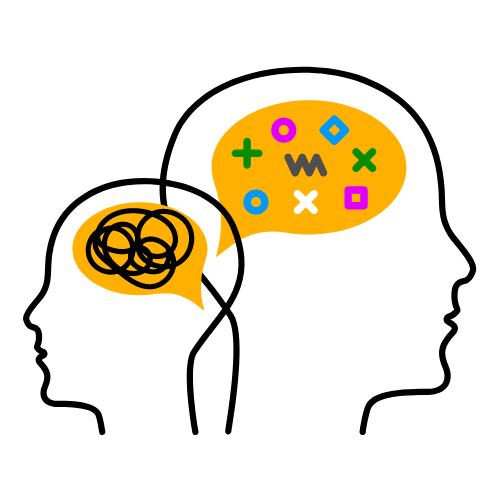Two Ways of Thinking
Some researchers, particularly in the field of psychology talk about two ways of thinking. Most refer to these as divergent thinking and convergent thinking. There is some disagreement on terms and some call these creative thinking and critical thinking while others call them associative thinking and analytical thinking. These two modes of thinking sit neatly researchers’ definition of creativity as something that is original and has value.
Divergent thought is broad, free ranging and benefits from being uncriticised. Convergent thought is closely focused, evaluative and critical by nature. Like all good scientists, the psychologists have a technical term and acronym for a two-stage creative processes that uses divergent thinking followed by convergent thinking. They call it Blind Variation and Selective Retention (BVSR) (Simonton 2011).


The Brainstorm
Consider the example of a brainstorm. In a brainstorm participants are generally reminded that there are no bad, silly or worthless ideas. They are told not to criticise the ideas of the other participants. This isn’t because the ideas are all perfect, worthwhile and serious, often some or more will be. It is to enhance the free flow of ideas as a silly idea may well stimulate a worthwhile one in another participant. This is an example of divergent thinking. After the brainstorm convergent thinking can be used to evaluate the ideas developed. Using these two ways of thinking we can arrive at a new solution, idea or product that has value
Modes of Thinking and Creativity
To be more creative we need to identify and manage these two modes of thinking. If we able to consciously exercise them and switch between them we can control two-stage creative thinking processes. Research has shown (Pringle et al 2016) that the skill of shifting between divergent and convergent thinking at will is correlated with creativity in different fields. In the research this is referred to as ‘mode shifting’. The research goes further to say that metacognitive awareness of mode shifting allows us to use these modes in different aspects of our lives. Thus our creativity is not limited to one aspect of our lives.
We are Good at Convergent Thinking
Most of us have been trained in convergent thinking through our education and after so many years of learning it has become our predominant mode of thinking. We are generally will skilled in logic, analysis, evaluation and deductive reasoning. For many of us the skill of divergent thinking is something we need to practice. With practice we will recognise the difference between these two modes of thought. When we can enter a state of divergent thinking or convergent thinking, at will, we have the ability to increase our creativity. There are several ways in which we can develop our skills and recognition of divergent thinking. There are exercises we can do to assist with divergent thinking. One is to practice using the brain’s Default Mode Network.

References
- Pringle, Andrew, Sowden, Paul, Deeley, Carys and Sharma, Sarika. (2016) Shifting Between Modes of Thought: A Domain General Creative Thinking Skill? In Reisman, Fredricka (ed.) Creativity in Arts, Science and Technology. Proceedings of the 2016 Knowledge, Innovation and Enterprise Conference. KIE Conference Publications, U.K. Accessed online on 10 August 2021 at https://www.researchgate.net/publication/312592085_Shifting_between_modes_of_thought_a_domain-general_creative_thinking_skill
- Simonton, Dean (2011) Creativity and Discovery as Blind Variation: Campbell’s (1960) BVSR Model After the Half Century Mark. Review of General Psychology 2011, Vol. 15, No 2. Accessed online on 12 April 2020 at https://pdfs.semanticscholar.org/7260/21ff81fe003d03b0181aead969a1d777d174.pdf

